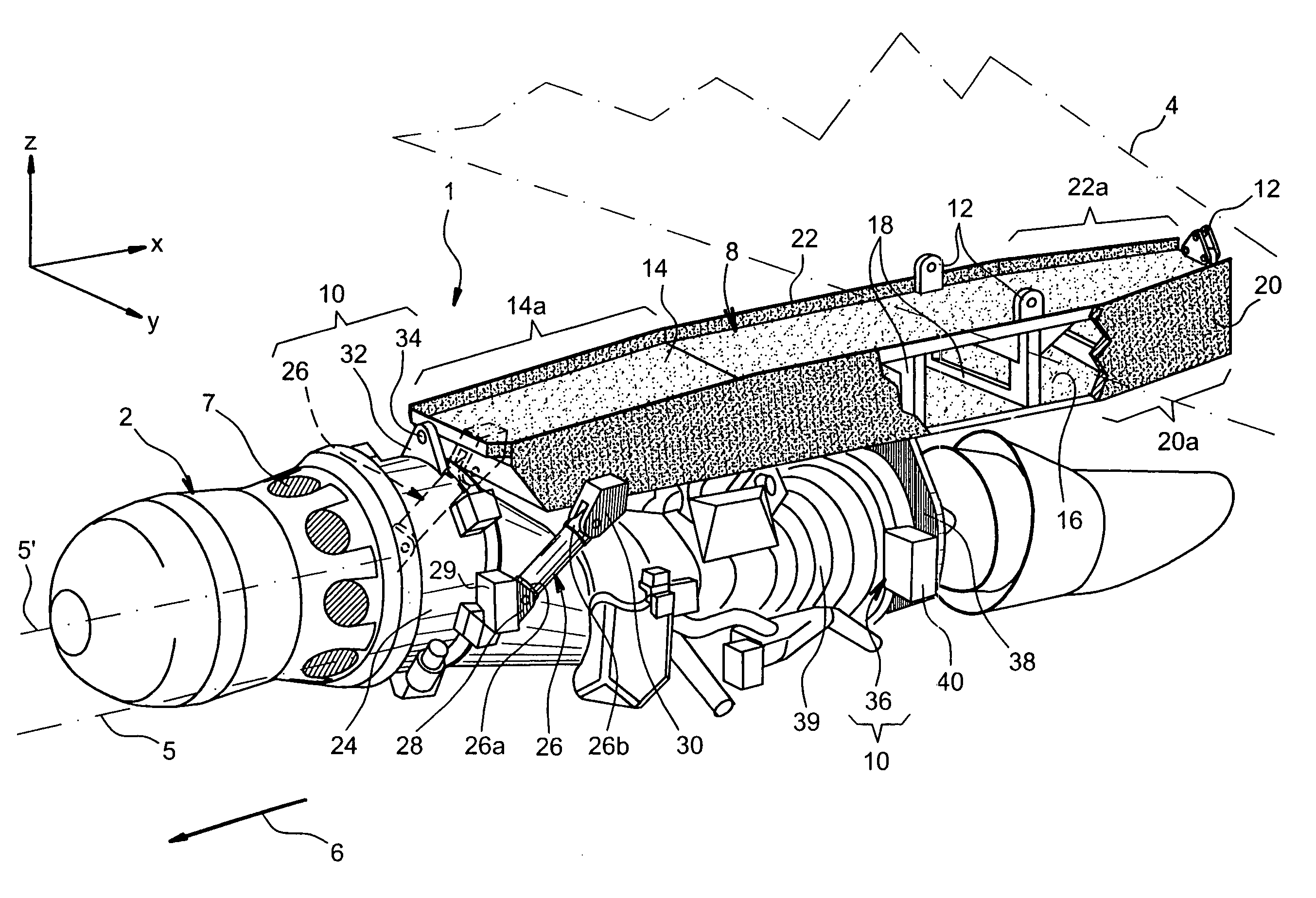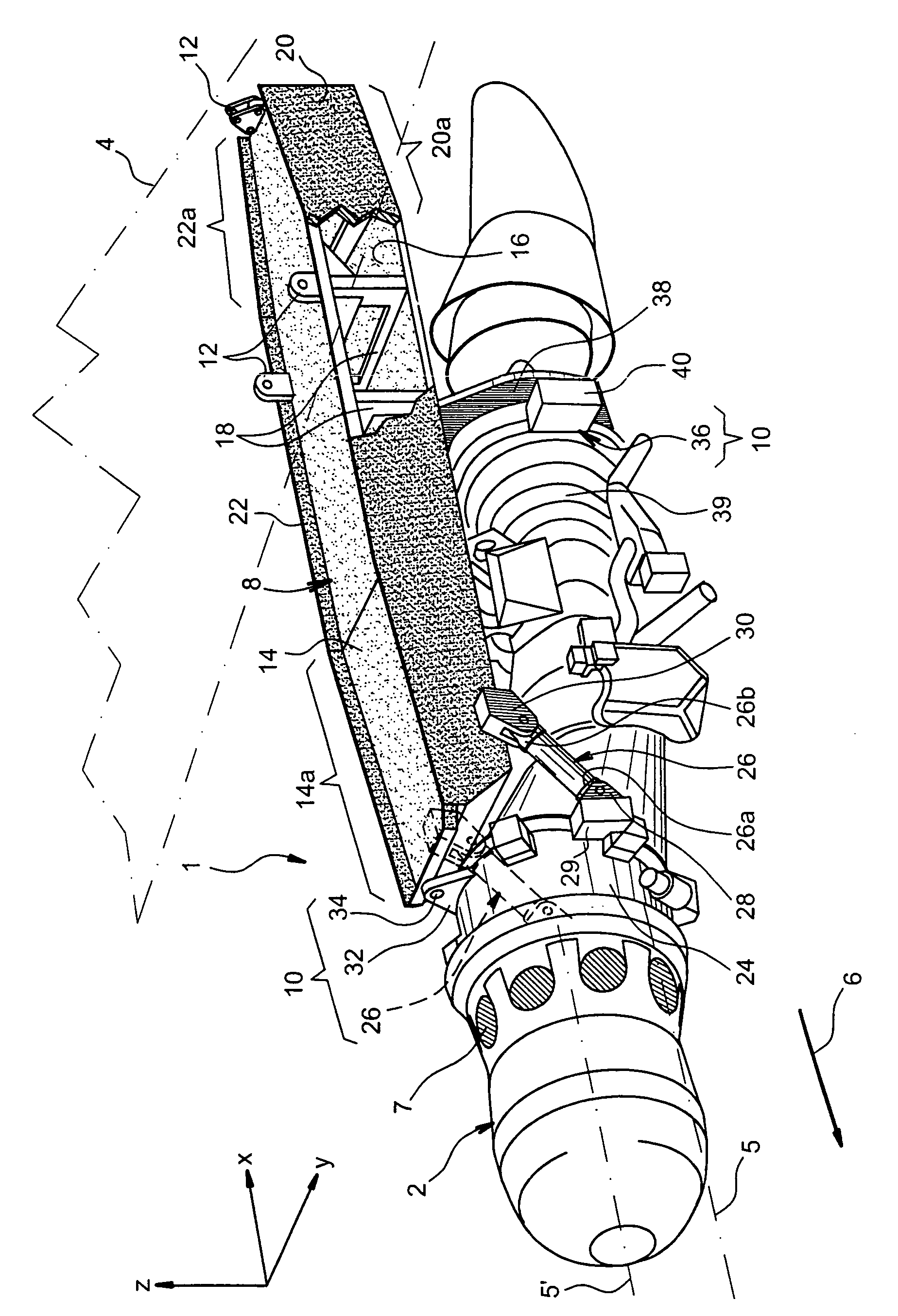Structure for mounting a turboprop under an aircraft wing
a technology for aircraft wings and structures, applied in the direction of machines/engines, mechanical apparatus, transportation and packaging, etc., can solve the problem that the structure cannot resist the torque generated by the entire engin
- Summary
- Abstract
- Description
- Claims
- Application Information
AI Technical Summary
Benefits of technology
Problems solved by technology
Method used
Image
Examples
Embodiment Construction
[0031]The single FIGURE shows a mounting structure 1 according to a first preferred embodiment of this invention, this structure 1 being designed to suspend a turboprop 2 under an aircraft wing shown only diagrammatically for obvious reasons of clarity, and generally denoted by the numeric reference 4.
[0032]Throughout the following description, by convention, X is the direction parallel to a longitudinal axis 5 of the turboprop 2, Y is the transverse direction relative to the aircraft, and Z is the vertical direction or the direction radially outwards from the turboprop 2 towards the mounting structure 1, these three directions being orthogonal to each other. It is noted that the longitudinal axis 5 of the turboprop 2 should be considered as being the longitudinal axis of the engine casing, and not the longitudinal axis of its propeller 7 (for which the blades are shown). The longitudinal axis of the propeller 7 is indicated by numeric reference 5′ on the single FIGURE. It is noted ...
PUM
 Login to View More
Login to View More Abstract
Description
Claims
Application Information
 Login to View More
Login to View More - R&D
- Intellectual Property
- Life Sciences
- Materials
- Tech Scout
- Unparalleled Data Quality
- Higher Quality Content
- 60% Fewer Hallucinations
Browse by: Latest US Patents, China's latest patents, Technical Efficacy Thesaurus, Application Domain, Technology Topic, Popular Technical Reports.
© 2025 PatSnap. All rights reserved.Legal|Privacy policy|Modern Slavery Act Transparency Statement|Sitemap|About US| Contact US: help@patsnap.com


